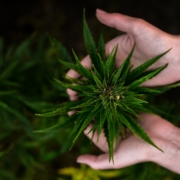Cannabis use predicts risks of heart failure and cerebrovascular accidents: results from the National Inpatient Sample.
Authors:
Aditi Kalla, Parasuram Krishnamoorthy, Akshaya Gopalakrishnan, Vincent Figueredo
Published in Journal of Cardiovascular Medicine
September 2018
Abstract
BACKGROUND:
Cannabis for medicinal and/or recreational purposes has been decriminalized in 28 states as of the 2016 election. In the remaining states, cannabis remains the most commonly used illicit drug. Cardiovascular effects of cannabis use are not well established due to a limited number of studies. We therefore utilized a large national database to examine the prevalence of cardiovascular risk factors and events amongst patients with cannabis use.
METHODS:
Patients aged 18-55 years with cannabis use were identified in the National Inpatient Sample 2009-2010 database using the Ninth Revision of International Classification of Disease code 304.3. Demographics, risk factors, and cardiovascular event rates were collected on these patients and compared with general population data.
RESULTS:
Prevalence of heart failure, cerebrovascular accident (CVA), coronary artery disease, sudden cardiac death, and hypertension were significantly higher in patients with cannabis use. After multivariate regression adjusting for age, sex, hypertension, diabetes mellitus, hyperlipidemia, coronary artery disease, tobacco use, and alcohol use, cannabis use remained an independent predictor of both heart failure (odds ratio = 1.1, 1.03-1.18, P < 0.01) and CVA (odds ratio = 1.24, 1.14-1.34, P < 0.001).
CONCLUSION:
Cannabis use independently predicted the risks of heart failure and CVA in individuals 18-55 years old. With continued legalization of cannabis, potential cardiovascular effects and their underlying mechanisms need to be further investigated.
DOI: 10.2459/JCM.0000000000000681
PAYWALL
Citation:
Kalla A, Krishnamoorthy PM, Gopalakrishnan A, Figueredo VM. Cannabis use predicts risks of heart failure and cerebrovascular accidents. J Cardiovasc Med. 2018;19(9):480-484. doi:10.2459/JCM.0000000000000681

